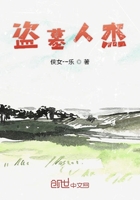("Description Phys.des Iles Can." page 472.)Two of these shells, namely, the Gryphaea and Trigonia, appear to be identical with species collected by Meyen and myself on the Peuquenes range; and in the opinion of Von Buch and M.d'Orbigny, the two formations belong to the same age.I must here add, that Professor E.Forbes, who has examined my specimens from this place and from the Peuquenes range, has likewise a strong impression that they indicate the Cretaceous period, and probably an early epoch in it: so that all the palaeontologists who have seen these fossils nearly coincide in opinion regarding their age.The limestone, however, with these fossils here lies at the very base of the formation, just above the porphyritic conglomerate, and certainly several thousand feet lower in the series, than the equivalent, fossiliferous, black, shaly rocks high up on the Peuquenes range.
It is well worthy of remark that these shells, or at least those of which Isaw impressions in the limestone (bed No.3), must have been covered up, on the LEAST computation, by 4,000 feet of strata: now we know from Professor E.Forbes's researches, that the sea at greater depths than 600 feet becomes exceedingly barren of organic beings,--a result quite in accordance with what little I have seen of deep-sea soundings.Hence, after this limestone with its shells was deposited, the bottom of the sea where the main line of the Cordillera now stands, must have subsided some thousand feet to allow of the deposition of the superincumbent submarine strata.
Without supposing a movement of this kind, it would, moreover, be impossible to understand the accumulation of the several lower strata of COARSE, well-rounded conglomerates, which it is scarcely possible to believe were spread out in profoundly deep water, and which, especially those containing pebbles of quartz, could hardly have been rounded in submarine craters and afterwards ejected from them, as I believe to have been the case with much of the porphyritic conglomerate formation.I may add that, in Professor Forbes's opinion, the above-enumerated species of mollusca probably did not live at a much greater depth than twenty fathoms, that is only 120 feet.
To return to our section down the valley; standing on the great N.by W.
and S.by E.uniclinal axis of the Puente del Inca, of which a section has just been given, and looking north-east, greater tabular masses of gypseous formation (KK) could be seen in the distance, very slightly inclined towards the east.Lower down the valley, the mountains are almost exclusively composed of porphyries, many of them of intrusive origin and non-stratified, others stratified, but with the stratification seldom distinguishable except in the upper parts.Disregarding local disturbances, the beds are either horizontal or inclined at a small angle eastwards:
hence, when standing on the plain of Uspallata and looking to the west or backwards, the Cordillera appear composed of huge, square, nearly horizontal, tabular masses: so wide a space, with such lofty mountains so equably elevated, is rarely met with within the Cordillera.In this line of section, the interval between the Puente del Inca and the neighbourhood of the Cumbre, includes all the chief axes of dislocation.
The altered clay-slate formation, already described, is seen in several parts of the valley as far down as Las Vacas, underlying the porphyritic conglomerate.At the Casa de Pujios [L], there is a hummock of (andesitic?)granite; and the stratification of the surrounding mountains here changes from W.by S.to S.W.Again, near the R.Vacas there is a larger formation of (andesitic?) granite [M], which sends a meshwork of veins into the superincumbent clay-slate, and which locally throws off the strata, on one side to N.W.and on the other to S.E.but not at a high angle: at the junction, the clay-slate is altered into fine-grained greenstone.This granitic axis is intersected by a green dike, which I mention, because I do not remember having elsewhere seen dikes in this lowest and latest intrusive rock.From the R.Vacas to the plain of Uspallata, the valley runs N.E., so that I have had to contract my section; it runs exclusively through porphyritic rocks.As far as the Pass of Jaula, the claystone conglomerate formation, in most parts highly porphyritic, and crossed by numerous dikes of greenstone porphyry, attains a great thickness: there is also much intrusive porphyry.From the Jaula to the plain, the stratification has been in most places obliterated, except near the tops of some of the mountains; and the metamorphic action has been extremely great.















